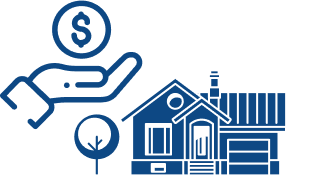Homebuilders Stop Housing Projects: Materials, Demand, Costs
October 2nd, 2023 / Author: Cesar GomezThe housing boom surprised homebuilders who didn’t expect it once the pandemic hit. Suddenly, this industry was returning to its former glory of 2005, when there were a lot of small and large home-building companies.
The suppliers of the often used materials have responded with record-breaking inflation, shortages, and transport issues. The lumber industry had the most significant impact on prices and has left a long-term effect on the real estate market. Today, the prices have fallen from record highs, but the construction prices are still high.
The pandemic essentially surprised the suppliers, too, who cut back production in March of 2020 and couldn’t achieve to meet the demand ever since then. Undoubtedly, the slowed production of homes and supplies is a post-recession legacy.
Current Prices of Materials
Prices of essential building materials have dropped since last year, but the prices are still well above the pre-pandemic levels. Hardwood and softwood lumber is 50% higher than it was two and a half years ago. Soft plywood is 130% more expensive than in 2019.
These supplies are not only more expensive, but also harder to obtain. Lack of them had slowed down constructions and increased building costs all over the country.
The fact of the matter is that the expensive materials and decreased demand put a lot of pressure on home builders. But even though the demand fell down in the past few months, when rates started climbing, doesn’t mean that the US isn’t severely undersupplied with housing.
Construction Pause: Long Term and Short Term Consequences
During the last two quarters, the sales have dropped around 10% nationwide. This was a signal for private homebuilding companies to put a pause on future projects and even stop the projects already in motion.
The supply is still lacking, but at the same time, the demand is slowing down. Homebuilders are pausing the production of single-family homes, but many projects that are in the works cannot be stopped. It is unprofitable for private businesses to produce homes when no one wants to buy them at the moment.
However, this creates a cycle of market volatility that comes and goes in waves. First, the rates fall down. The economy allows for people to invest in real estate. After the increased demand, homebuilders start with an abundance of projects. The market is hot for some time, and the prices start to rise.
In order for the government to slow down the price climb, they increase the rates. Higher rates cool off the demand, and homebuilders react immediately in fear of losing too much money. That way, the necessary supply is never created - because the homebuilding doesn’t respond to the country’s housing needs. Rather, it responds just to the current state of the market.
SELL
YOUR HOUSE
If you want to sell fast and are worried about how long the traditional process takes, and the commission and fees involved, consider working with SleeveUp Homes.





 view all blogs by this author
view all blogs by this author Zachariah Peterson (69 blogs)
Zachariah Peterson (69 blogs)